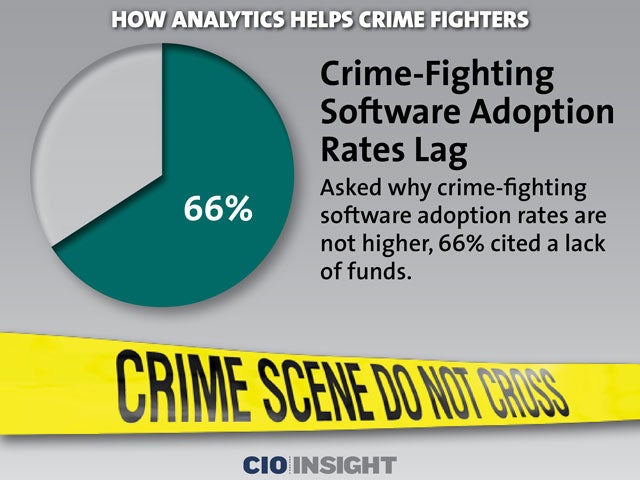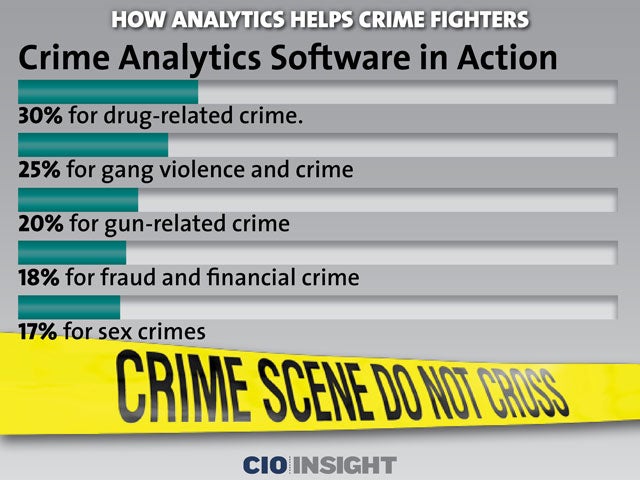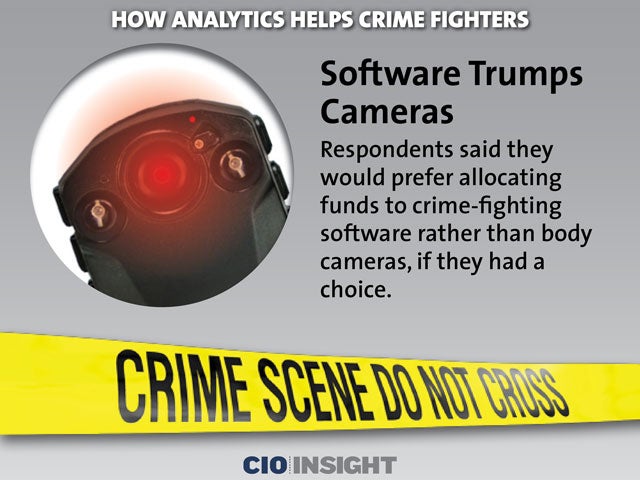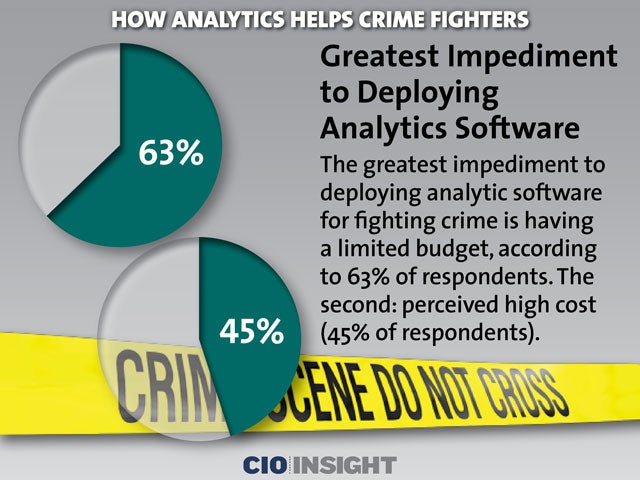
How Analytics Helps Crime Fighters
 How Analytics Helps Crime Fighters
How Analytics Helps Crime Fighters
Analytics and intelligence-led policing can provide an invaluable resource for crime solving, yet a lack of funding often hinders its adoption.
 Crime-Fighting Analytics Software
Crime-Fighting Analytics Software
34% of respondents said they use crime-fighting software, roughly the same as last year. 93% said they expect crime analytics software to become more widely used in the future.
 Crime-Fighting Software Adoption Rates Lag
Crime-Fighting Software Adoption Rates Lag
Asked why crime-fighting software adoption rates are not higher, 66% cited a lack of funds.
 Law Enforcement Uses
Law Enforcement Uses
Of those using some form of technology to fight crime, 77% say they analyze social media for intelligence, and 60% analyze social networks to uncover gang activity.
 Crime Analytics Software in Action
Crime Analytics Software in Action
30% for drug-related crime, 25% for gang violence and crime, 20% for gun-related crime, 18% for fraud and financial crime, 17% for sex crimes
 If I Had the Money…
If I Had the Money…
50% of respondents said they would use advanced crime analytics to fight drug crimes. 40% say they would use it specifically to investigate fraud and financial crimes.
 Software Trumps Cameras
Software Trumps Cameras
Respondents said they would prefer allocating funds to crime-fighting software rather than body cameras, if they had a choice.
 Benefits of Crime Analytic Software
Benefits of Crime Analytic Software
Better, faster discovery of relationships between data: 63%, Being able to solve crimes faster: 47%, Being able to make better use of mobile phone data, emails, social media history and other data in investigations: 45%
 Greatest Impediment to Deploying Analytics Software
Greatest Impediment to Deploying Analytics Software
The greatest impediment to deploying analytic software for fighting crime is having a limited budget, according to 63% of respondents. The second: perceived high cost (45% of respondents).